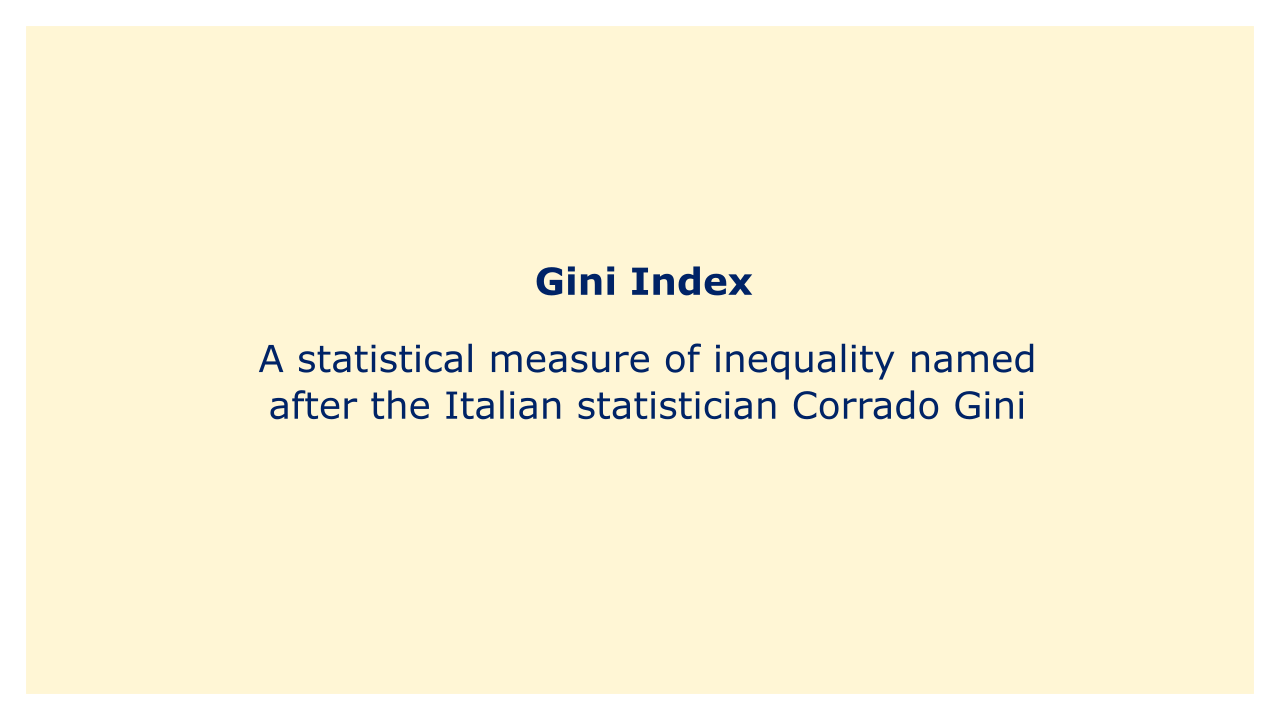 |
| Image: Moneybestpal.com |
A statistical measure of inequality is the Gini index, commonly referred to as the Gini coefficient. It bears the name of Italian statistician Corrado Gini, who first suggested the measure in 1912.
The Gini index is used to assess the degree of inequality in the distribution of a variable, usually wealth or income. It goes from 0 to 1, where 0 denotes absolute equality (everyone has the same level of wealth or income) and 1 denotes perfect inequality (i.e., one person has all the income or wealth, while everyone else has none).
The Gini index is determined by plotting the total amount of wealth or income owned by the bottom x percent of the population, where x is a number between 0 and 100. The resulting curve is known as the Lorenz curve. The area between the Lorenz curve and the line of perfect equality, or the diagonal line running from the bottom left to the top right of the graph, is then divided by the total area beneath the line of perfect equality to determine the Gini index.
When everyone has the same level of wealth or income, the Gini index is 0, indicating perfect equality. When one individual has all the wealth or income and everyone else has none, the Gini index is 1, which denotes perfect inequality. In real life, Gini indices usually range from 0 to 1, with higher numbers denoting higher degrees of inequality.
Economic experts, decision-makers, and social scientists frequently use the Gini index to analyze income and wealth disparity and to guide the development of policies aimed at eliminating it.
